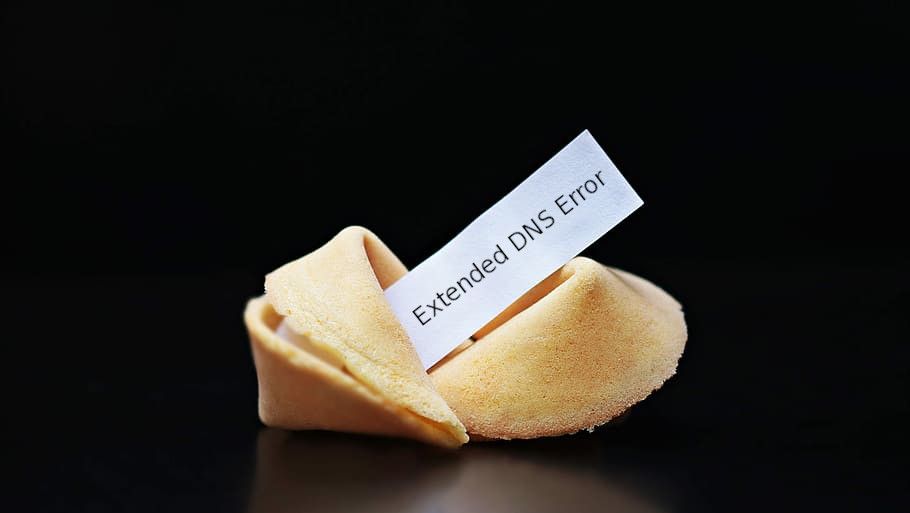Heavy Networking 547: Building And Monitoring A User-Centric Digital Experience With Catchpoint (Sponsored)
Today’s Heavy Networking show dives into Digital Experience Monitoring (DEM) with sponsor Catchpoint. Catchpoint combines synthetic testing with end user device monitoring to provide greater visibility into the end user experience while helping network engineers and IT admins support and troubleshoot a distributed workforce. Our guests from Catchpoint are Nik Koutsoukos, CMO; and Tony Ferelli, VP Operations.Heavy Networking 547: Building And Monitoring A User-Centric Digital Experience With Catchpoint (Sponsored)
Today’s Heavy Networking show dives into Digital Experience Monitoring (DEM) with sponsor Catchpoint. Catchpoint combines synthetic testing with end user device monitoring to provide greater visibility into the end user experience while helping network engineers and IT admins support and troubleshoot a distributed workforce. Our guests from Catchpoint are Nik Koutsoukos, CMO; and Tony Ferelli, VP Operations.
The post Heavy Networking 547: Building And Monitoring A User-Centric Digital Experience With Catchpoint (Sponsored) appeared first on Packet Pushers.
Learning To Listen For Learning

Can you hear me? Are you listening to me? Those two statements are used frequently to see if someone is paying attention to what you’re saying. Their connotation is very different though. One asks a question about whether you can tell if there are words coming out of someone’s mouth. Is the language something you can process? The other question is all about understanding.
Taking Turns Speaking
“Seek first to understand,then to be understood.” – Stephen Covey
Listening is hard. Like super hard. How often do you find yourself on a conference call with your mind wandering to other things you need to take care of? How many times have we seen someone shopping online for shoes or camping gear instead of taking notes on the call they should be paying attention to? They answer is more often than we should.
Attention spans are hard for everyone, whether you’re affected by attention disorders or have normal brain chemistry. Our minds hate being bored. They’re always looking for a way to escape to something more exciting and stimulating. You know you can feel it when there’s a topic that seriously interests you and pulls you in versus the same old Continue reading
Unwrap the SERVFAIL

We recently released a new version of Cloudflare Resolver which adds a piece of information called “Extended DNS Errors” (EDE) along with the response code under certain circumstances. This will be helpful in tracing DNS resolution errors and figuring out what went wrong behind the scenes.

A tight-lipped agent
The DNS protocol was designed to map domain names to IP addresses. To inform the client about the result of the lookup, the protocol has a 4 bit field, called response code/RCODE. The logic to serve a response might look something like this:
function lookup(domain) {
...
switch result {
case "No error condition":
return NOERROR with client expected answer
case "No record for the request type":
return NOERROR
case "The request domain does not exist":
return NXDOMAIN
case "Refuse to perform the specified operation for policy reasons":
return REFUSE
default("Server failure: unable to process this query due to a problem with the name server"):
return SERVFAIL
}
}
try {
lookup(domain)
} catch {
return SERVFAIL
}
Although the context hasn't changed much, protocol extensions such as DNSSEC have been added, which makes the RCODE run out of space to express the server's internal Continue reading
Video: Cisco SD-WAN Onboarding Process
After describing Cisco SD-WAN architecture and routing capabilities, David Penaloza focused on the onboarding process and tasks performed by the Cisco SD-WAN solution (encryption, tunnel establishment, and device onboarding) in it’s so-called Orchestration Plane.
Video: Cisco SD-WAN Onboarding Process
After describing Cisco SD-WAN architecture and routing capabilities, David Penaloza focused on the onboarding process and tasks performed by the Cisco SD-WAN solution (encryption, tunnel establishment, and device onboarding) in it’s so-called Orchestration Plane.
6 Essential “Cybersecurity Awareness Month” Tips for Savvy Organizations
As we near the end of cybersecurity awareness month, don’t fall behind in the battle. Follow these tips to stay ahead of security risks.Introducing Data-in-Transit Encryption for Calico Enterprise
We’re excited to announce that Calico Enterprise, the leading solution for Kubernetes networking, security and observability in hybrid and multi-cloud environments, now includes encryption for data-in-transit.
Calico Enterprise is known for its rich set of network security implementations to protect container workloads by restricting traffic to and from trusted sources. These include, but are not limited to, implementing existing enterprise security controls in Kubernetes, managing egress access using DNS policy, extending firewalls to Kubernetes, and intrusion detection and threat defense. As the Kubernetes footprint expands, however, we’ve seen demand for an even greater in-depth approach to protecting sensitive data that falls under regulatory compliance mandates.
Not all threats originate from outside an organization. According to Gartner, nearly 75% of breaches happen due to insider behavior, from people within the organization such as employees, former employees, contractors or business associates, who have inside information concerning the organization’s security practices, data and computer systems. This level of exposure is unacceptable for organizations that have strict data protection and regulatory compliance requirements. No matter where a threat originates, encrypted data is unreadable to anyone except the legitimate keyholder, thus protecting the data should a breach occur.
Several regulatory standards Continue reading
DDoS protection of local address space
sflow sample 16384
sflow polling-interval 30
sflow extension bgp
sflow destination 10.0.0.70
sflow run
docker run --rm -d -e "COLLECTOR=host.docker.internal" -e "SAMPLING=10" \Continue reading
--net=host -v /var/run/docker.sock:/var/run/docker.sock:ro \
--name=host-sflow sflow/host-sflow
IPv6 Buzz 063: Revisiting IPv6-Only
In this week's episode Ed, Scott, and Tom revisit the topic of IPv6-only and discuss its current state in service provider networks, in the data center, and even to the desktop.
The post IPv6 Buzz 063: Revisiting IPv6-Only appeared first on Packet Pushers.
